& Construction

Integrated BIM tools, including Revit, AutoCAD, and Civil 3D
& Manufacturing

Professional CAD/CAM tools built on Inventor and AutoCAD
17 min read
This quick update fixes 2 recent issues:
Issue with Move to Group in Direct Modeling fixed
We fixed an issue where if you right-clicked on a body inside a component and selected “move to group” when there was no group folder for the body to move to, Fusion 360 got very confused and crashed. We’re glad we caught it – now it no longer crashes and will bring up the Move to Group dialog.
Sketching solving issue fixed
We came across a design where if you tried to drag the bottom end of a fully constrained vertical sketch line within the Trim tool, Fusion 360 would lock up. Apparently this was related to an issue in our sketch solver, so we did our magic and made this problem go away.
Don’t feel like reading? Here’s our what’s new highlights video with Bryce and Aaron. You should read more though about this update. Just sayin’ :).
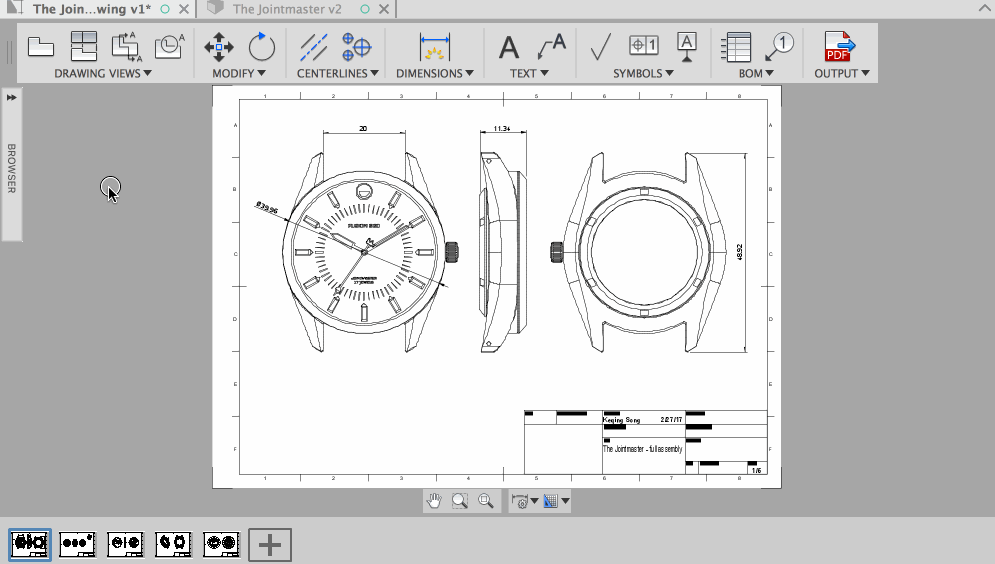
Aww yeah – multi-sheet functionality has finally landed! Now when you create a 2D drawing of your design, you can also create multiple sheets for that design, instead of creating multiple drawings like before. There are 2 ways to add new sheets – quick-n-easy, or with more options. Here’s how you can do both:
Quick-n-easy:

At the bottom of the screen you’ll see a new strip that contains the active sheet you’re on, additional sheets you have (if any), and a “+” button to add a new sheet. Clicking that will duplicate the previous sheet with the same size and template.
With more options:

Another way you can add new sheets is by right-clicking on an existing sheet and selecting “add sheet”. This will give you more options in a dialog, allowing you to add a sheet from the existing drawing template or from another template that you’ve previously saved. If some of your sheets are sized differently, you can select the one you want your new sheet to duplicate.
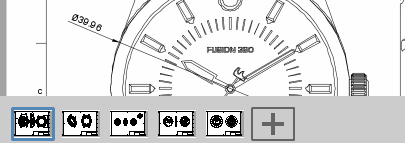
Reorder sheets by dragging them to the left or right. Right-click on one and you can rename, delete, or add a new sheet. Oh wait, you didn’t mean to delete it? No worries, just undo that delete with CTRL/command + Z and you’re sheet is back.
Sheets can be different sizes, and if you save your drawing as a template it will be saved as a multi-sheet template that respects the order and sheet sizes of your drawing.
If you output your drawing as PDF, your drawing will automatically open after it’s been saved as PDF. As a heads-up: this first implementation of multi-sheets will save each sheet as individual PDFs (yeah…I know). The next phase of this will combine all the sheets into one PDF (with each sheet being a page of the PDF) so that it’s more manageable. We are working towards delivering that functionality within the next couple of updates.

You can now create ordinate dimensions – it is located under the Dimensions drop-down menu. Ordinate dimensions allows you to set a specific area of your drawing as zero (as shown in the bottom left corner of this fixture), and dimension everything else based on that zero point. You can also chain your dimensions for easier dimensioning. Woohoo!

Good news! You can now also create custom tables in your drawing sheets! A Tables option now lives under the Text drop-down menu. When it’s active, hover over where the area you want the table to be and drop it on the sheet. Depending on the region you are hovering, it’ll automatically flip the title cell to follow typical drawing standards. If you prefer to keep the title cell to stay still, press SHIFT.
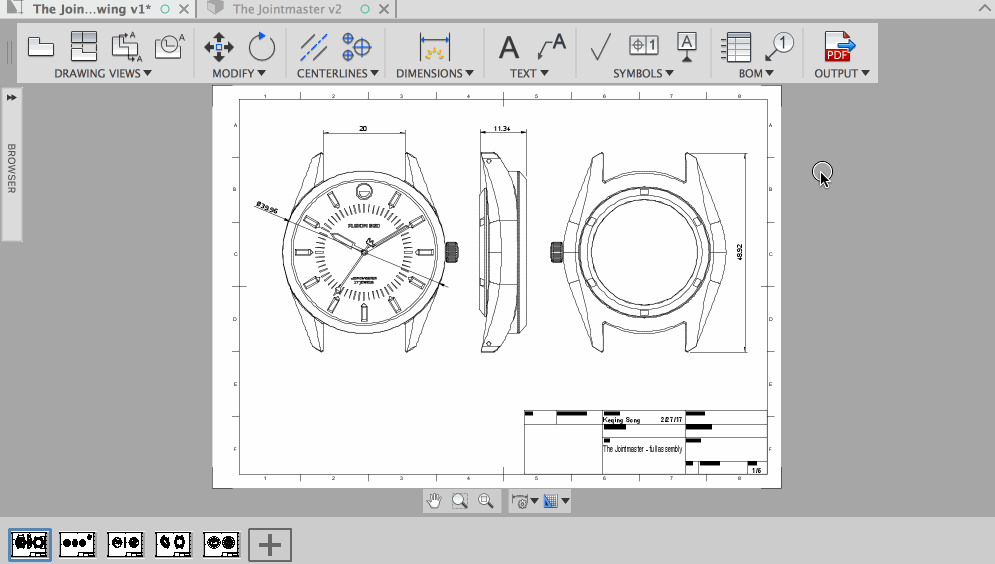
Once you’ve placed your table, you can edit it with common table editing options, just like editing an Excel sheet. Groovy.

So remember how the play button in the timeline was non-intuitively placed in-between the step-forward and fast-forward buttons? Now it’s in the middle, standardizing on universal playback button layout that exists on every media player ever designed since the beginning of time.

Previously when you performed a Compute All on your Mac, you had no indication that anything was happening until you saw yellow/red features appear in your timeline or the spinning beach ball of death. Now when you do it, a blue progress bar appears to indicate that Compute All is cranking away, with information on what it’s computing. That’s more like it.
Don’t worry – we didn’t forget about the ability to stop/abort a timeline playback or Compute All. It didn’t make this update, but should be ready for the next one.

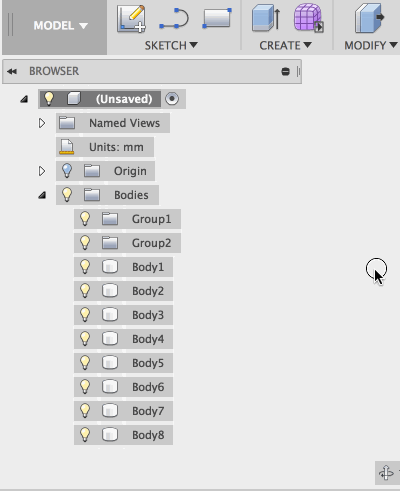 Yup – you read correctly. You can now create subfolders within the bodies folder and group your bodies into as many folders as you see fit. Select the bodies you want to group together and drag them into your newly created folders (and don’t forget to rename them).
Yup – you read correctly. You can now create subfolders within the bodies folder and group your bodies into as many folders as you see fit. Select the bodies you want to group together and drag them into your newly created folders (and don’t forget to rename them).
Here are some good things to know:
1. When you create a new group folder, it’ll appear below all your bodies. We really intended it to appear at the top, so we’ll be fixing this behavior in the next update.
2. If you have bodies in numerical order and batch move them into a group folder, the order of the bodies may become scrambled after the move. This is also getting fixed in the next update.
Naturally, the next step is to make folders for components available. This is on the roadmap as the next phase of this project, but we don’t have a good sense of when that’ll be available yet. Obviously, we’ll keep you posted as we get a better sense of when our teams can get to it.
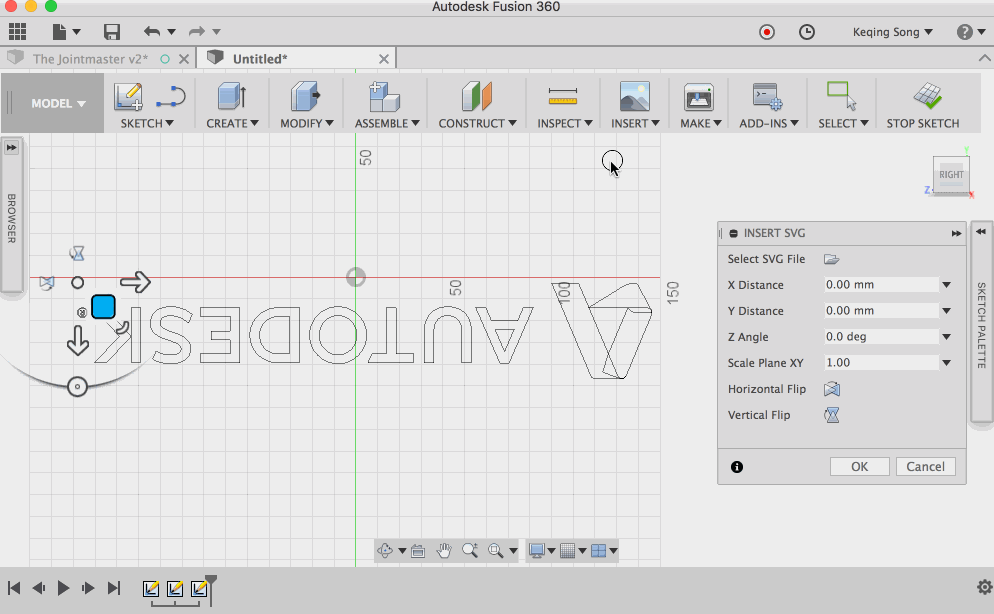
Sometimes when you inserted a SVG, it came in upside down or horizontally inverted. Side effects included excessive cursing, broken keyboards, and rage quitting. Now we’re introducing the cure to these side effects with Horizontal and Vertical Flip buttons, so you can orient your SVG and stay healthy!

We really buried this one deep, making it practically undiscoverable. Now when you right click on a spline point, you can activate the curvature handle and tweak the curvature of that spline based on the point.
 Previously when you dragged a spline handle into a horizontal/vertical orientation, Fusion 360 automatically created a constraint, which blocked further direction changes. This was very annoying if you didn’t mean to trigger it. Fusion 360 will no longer automatically create constraints unless you explicitly apply them yourself.
Previously when you dragged a spline handle into a horizontal/vertical orientation, Fusion 360 automatically created a constraint, which blocked further direction changes. This was very annoying if you didn’t mean to trigger it. Fusion 360 will no longer automatically create constraints unless you explicitly apply them yourself.

Now if you’re window select an active sketch with a bunch of 3D geometry also visible, it’ll no longer pick up unwanted 3D geometry and will only pick up sketch objects in that active sketch.
Scott Moyse pointed out an issue where the tangent arcs on his sketch would drastically change shapes even though the changes he was making were perfectly reasonable. It was a nasty bug. This issue, along with a bunch of other arc/tangency issues was affected by how our sketch solver tries to handle changes to a sketch, and we think that we’ve finally made a dent on ironing out the wrinkles.

We’ve gotten some feedback around how Fusion 360 handled displays model complexity/detail vs. how close or far you were zoomed in. Sometimes the detail got all bunched up and became very hard to see, resulting in some pretty gnarly tessellation.
Now when you right-click on a body or component, you’ll see a new option called Display Detail Control. Select it and you’ll be able to change the detail level from adaptive to 3 levels of fixed (high, medium, low).

Here is a visual comparison between adaptive and fixed (high) using the Zebra analysis. Notice how adaptive would start to blend the zebra stripes towards the tip of the cone, whereas fixed (high) does a better job at keeping the individual stripes separate. It’s good to note that this works on a per-body/component basis, so you can control how much detail you want on different parts of your design.

Changing it to fixed should also work with local and cloud renderings and see some nice anti-aliasing improvements as well.

Previously when you wanted to tweak the texture on your appearance materials, the only way you could see what direction your texture map was facing was by solely relying on the appearance itself. At least with wood materials you were able to judge the direction based on the wood grain, but with other materials, it was really kind of a guessing game.
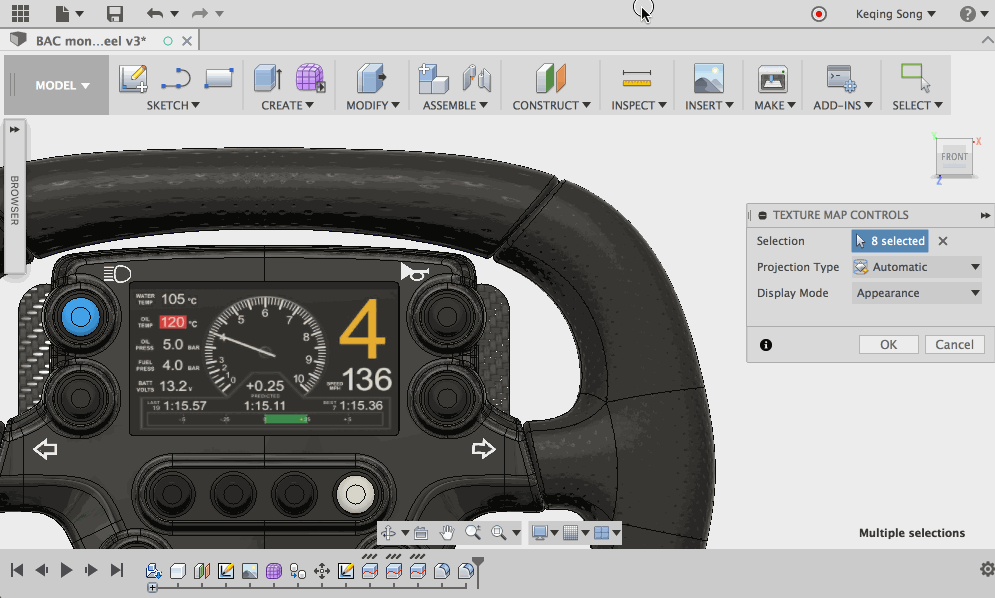
Now in the Texture Map Controls, changing the Display Mode from Appearance to UV Diagnostic Texture will reveal a grid and arrows, showing directionally how the texture is applied to the design. This should help you better align your material textures specifically at sharp edges of a design, so that it looks as realistic as possible.
We’ve renamed this because all these workflows are essentially 2D profile cutting workflows, and it’s also a mouthful to say water-jet, plasma, laser over and over. We take the quality of our tool-paths seriously, and did not feel comfortable taking 2D Profile out of preview, but we are shooting for it to graduate preview and become full production by the next update.

With 2D profile workflows becoming more and more stable and baked into the CAM workspace, you’ll now see a new cutting icon in the tool library, revealing 3 new tool types: water-jet, laser cutter, and plasma cutter. If you have existing tool-paths will need to select the correct tool type to regenerate the operation as the previous implementation didn’t have any tool selection and it is now required.
Al made a nice video of how you can better chain-select faces for a 2D profile operation such as waterjet cutting. Check it out, and let us know what you think!
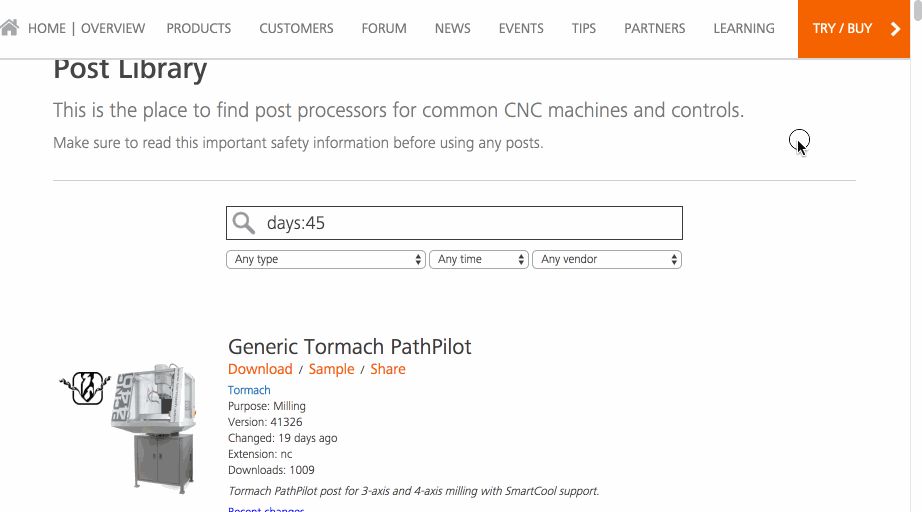
If you haven’t been to this site in awhile, it’ll be good to go back and check out some of the updated posts. Some have been updated in the past 14 days, and some in the past 4 days. Check it out here: https://cam.autodesk.com/posts/?search=days:45
We’ve gotten some feedback around how wonky our old study selector can look on different sized monitors with different resolutions. We went back to the drawing board and whipped up a new and improved study selector:

Now you won’t see any weird scrolling issues where the study type got cut off by screen resolution discrepancies. We have more usability improvements on the way for this selector in the near future, for example, more helpful information around what the study types are and help you decide which tests to use based on what you want to find out about your design.
Previously when you did a cloud solve, trying to figure how much cloud credits you actually had and how much you’re actually using per solve was like trying to figure out how much gas you have in your car – you’re never really sure how much you’re using and how much there really is when the empty light comes on.

Now when you do a cloud solve, you’ll see exactly how many cloud credits are required (about to be used), how many are available (total), and how many are left if you choose to solve.

We’ve been hearing that the factor of safety (FOS) of your design is pretty darn important, so based on your feedback, we’ve made Factor of Safety as the result type to show up for by default when you’ve completed a solve. We’ve also added color coded minimum and maximum FOS indicators around the areas affected.
No. you don’t need to spend 5 years in Nastranesia to learn Nastran-ese so you can actually figure out what the Nastran error messages you’ve been getting are saying. It would just spit out an error code. We’ve made it more useful by adding a cause/solution section to the message so you can at least diagnose the issue. We’ll continue to improve our Nastranese so it become more humanese.
Shape optimization results will now show up within Fusion Team on the browser so your team can stay in the loop on a variety of devices. They will also appear as a study results to include when you want to create a result report. The results will include:
We found issues around using multiple load cases in Linear Stress yielded the wrong results. We dug into the code and got the math straightened out.
Here are some other notable API updates:
As always, you can learn more about what’s new with API on our API learning page.
We’ve got some exciting things coming in the next couple of updates, including better offline data management, more 2D drawings goodness like Objects to cut (ability to select which components / bodies you want a section view to participate in a cut or not), View Chain Enhancements (Section of a section view, detail of a section view, projection of a section view), export PDF as 1 file, and text enhancements (bullets, lists and text justification).
That’s it for this what’s new – let us know what you think and we’ll keep you posted on news around the next update!
Cheers,
Keqing and the Fusion 360 team
By clicking subscribe, I agree to receive the Fusion newsletter and acknowledge the Autodesk Privacy Statement.
Success!
May we collect and use your data?
Learn more about the Third Party Services we use and our Privacy Statement.May we collect and use your data to tailor your experience?
Explore the benefits of a customized experience by managing your privacy settings for this site or visit our Privacy Statement to learn more about your options.